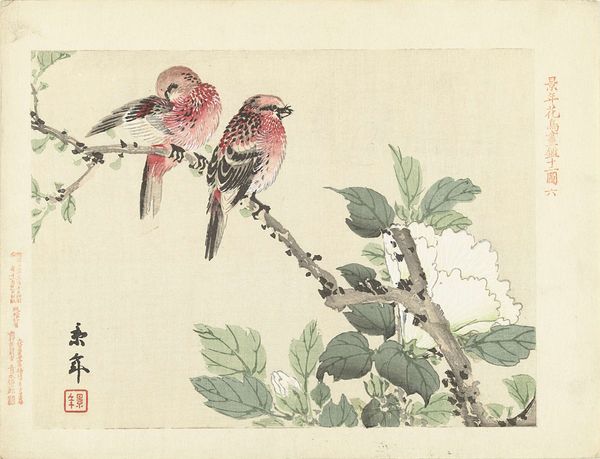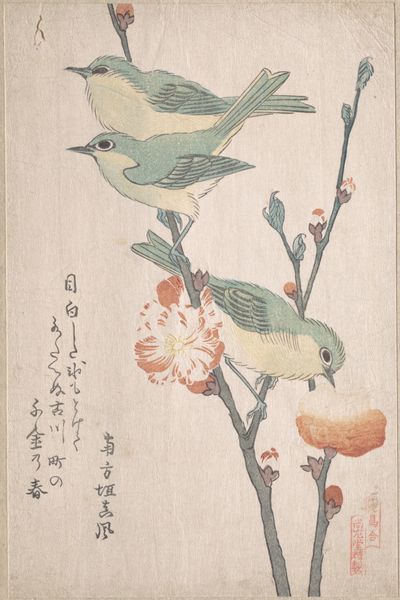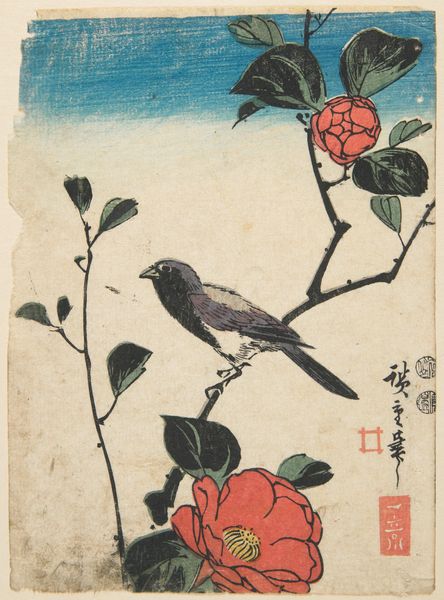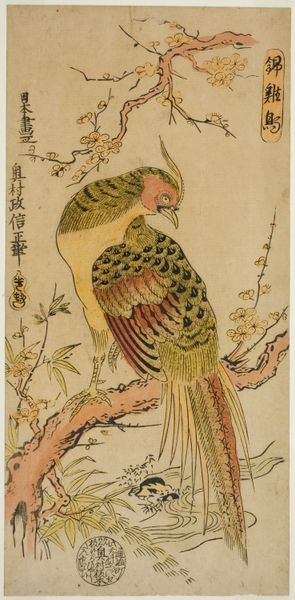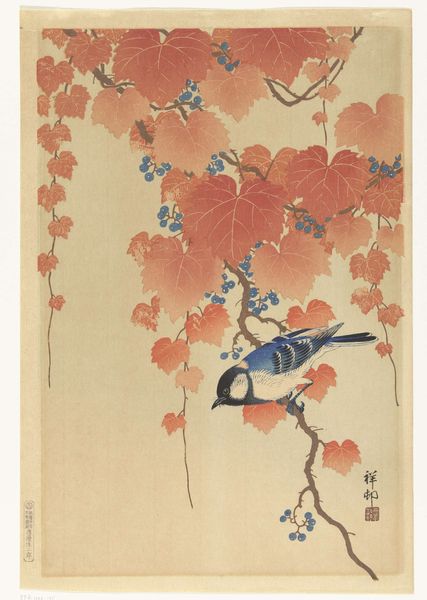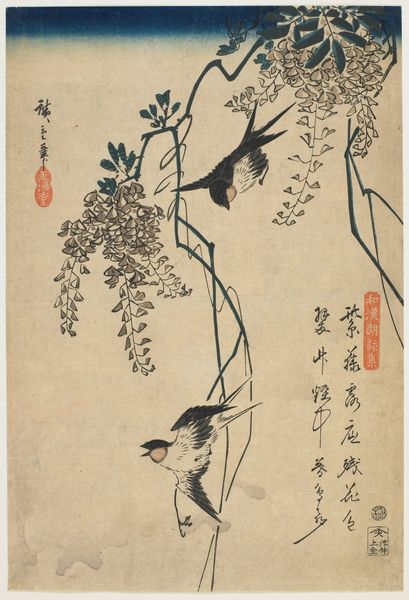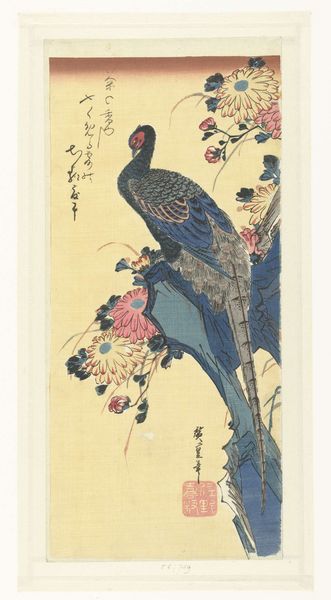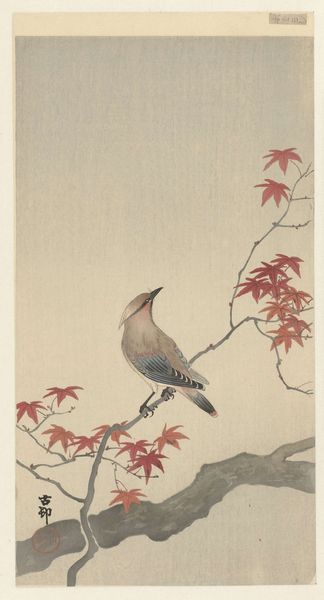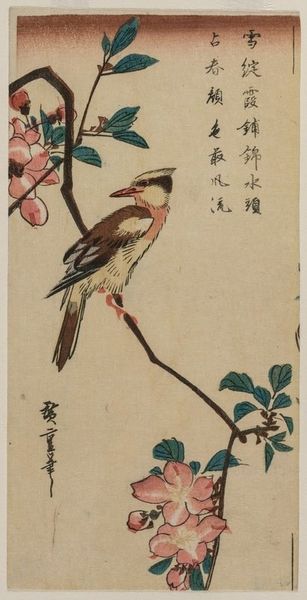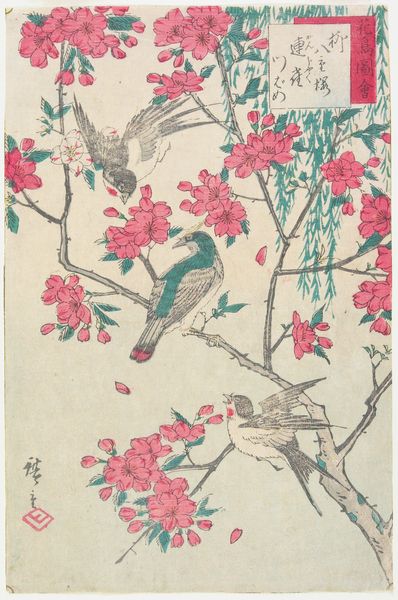
drawing, print, ink, woodblock-print
#
drawing
# print
#
asian-art
#
landscape
#
ukiyo-e
#
figuration
#
ink
#
woodblock-print
#
botanical drawing
#
botanical art
Dimensions: 14 15/16 × 6 5/8 in. (38 × 16.9 cm) (image, sheet, ōtanzaku)19 × 23 × 1 1/2 in. (48.26 × 58.42 × 3.81 cm) (outer frame)
Copyright: Public Domain
Curator: This serene print, titled "Macaw on Pine Branch," comes to us from the early 1830s, crafted by Utagawa Hiroshige. Editor: My first impression is one of tranquility. The almost pastel palette and simple composition make me feel as still as that macaw perched on the branch. Curator: Indeed, the piece exemplifies Ukiyo-e, that is, "pictures of the floating world." Though seemingly just a pleasant nature scene, it speaks to broader social contexts in 19th-century Japan, and an interest in the natural world amidst rapid urbanization. Editor: That bird pops so beautifully! Look how the artist juxtaposes its colorful plumage against the monochrome of the pine. And how its vibrant blues and reds are balanced with that somber branch—I would almost call the picture melancholy! Curator: You know, that bird might speak to something beyond mere aesthetic appreciation. Exotic animals were often seen as luxury items or symbols of foreign trade, reflecting the increased globalization even then impacting Edo society. Hiroshige has become so iconic, we forget how his seemingly innocuous prints reveal the political and economic textures of his time. Editor: I love that the perspective makes me feel like I’m sitting right beside the bird! There's also a touch of wit here: placing this brilliant, tropical creature in such a stark Japanese setting gives it the charming hint of, dare I say it, out-of-place-ness? Curator: I see your point. So what began as a straightforward nature print opens, upon closer inspection, into avenues reflecting trade, exoticism, and society's relation to the natural world. Editor: Absolutely! And isn't that why we keep getting drawn to these pieces centuries later, beyond all social meanings? Each of us finds something of our own there, however small.
Comments
No comments
Be the first to comment and join the conversation on the ultimate creative platform.


